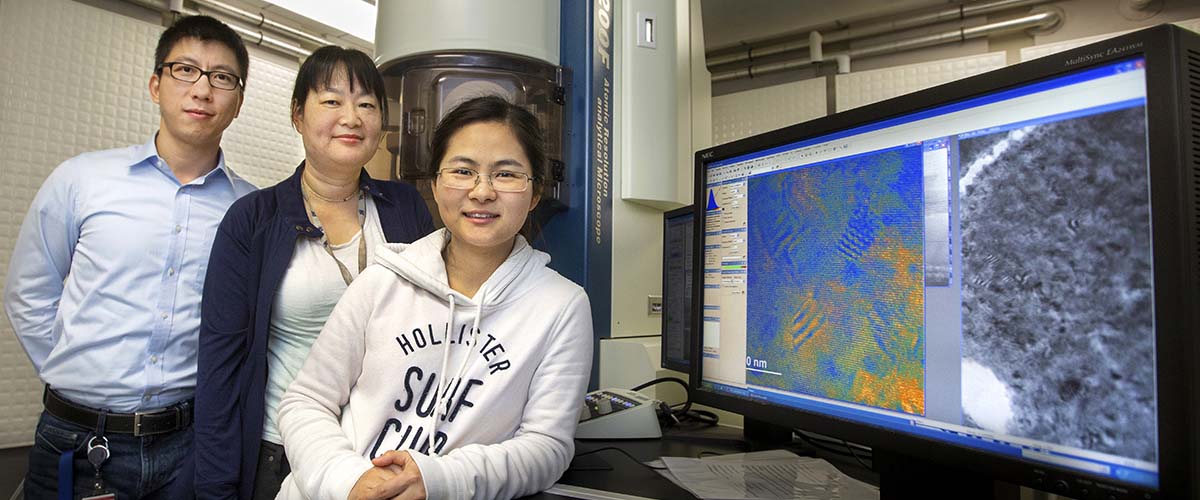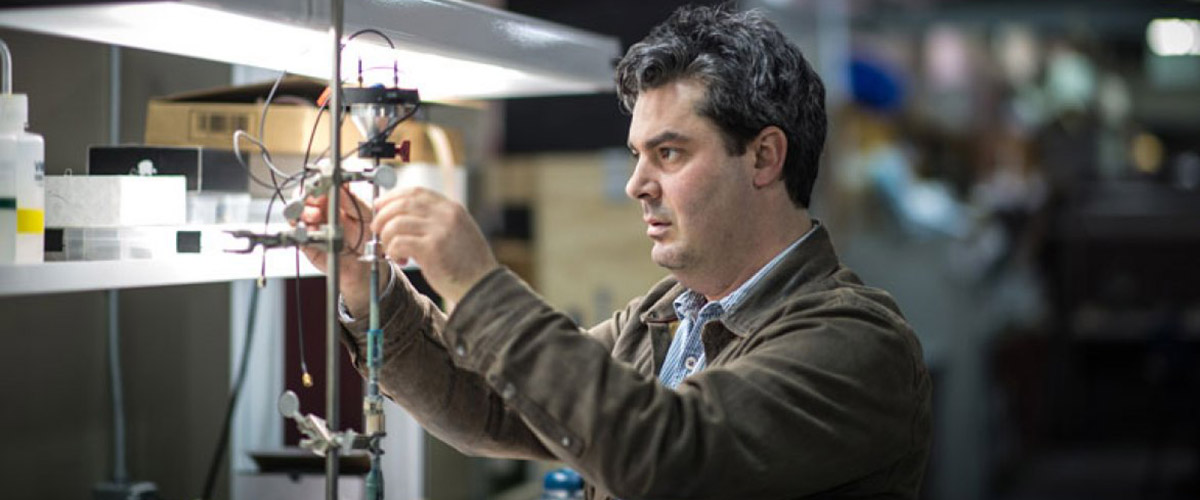Contact: Becka Bowyer
TALLAHASSEE, Fla. — Electrons in metals try to behave like obedient motorists, but they end up more like bumper cars. They may be reckless drivers, but a new study confirms this chaos has a limit established by the laws of quantum mechanics.
The team's paper, “Linear-in Temperature Resistivity From an Isotropic Planckian Scattering Rate,” written in collaboration with researchers led by Louis Taillefer from the University of Sherbrooke in Canada, published July 28 in Nature. The paper’s lead author is Gael Grissonnanche, a postdoctoral fellow with the Kavli Institute at Cornell for Nanoscale Science.
Metals carry electric current when electrons all move together in tandem. In most metals, such as the copper and gold used for electrical wiring, the electrons try to avoid each other and flow in unison. However, in the case of certain "strange" metals, this harmony is broken and electrons dissipate energy by bouncing off each other at the fastest rate possible. The laws of quantum mechanics essentially play the role of an electron traffic cop, dictating an upper limit on how often these collisions can occur. Scientists previously observed this limit on the collision rate, also known as the “Planckian limit,” but there is no concrete theory that explains why the limit should exist, nor was it known how electrons reach this limit in strange metals. So the researchers set out to carefully measure it.
"Empirically, we've known that electrons can only bounce into each other so fast. But we have no idea why," said Brad Ramshaw, the Dick & Dale Reis Johnson Assistant Professor in the Cornell College of Arts and Sciences, frequent MagLab user, and the paper's senior author. "Before, the 'Planckian limit' was just kind of inferred from data using very simple models. We did a very careful measurement and calculation and showed that it really is obeyed right down to the fine details. And we found that it’s isotropic, so it's the same for electrons traveling in any direction. And that was a big surprise."
The researchers focused their study on a copper oxide-based high-temperature superconductor known as a cuprate. They team needed sample rotation and temperature stability to within 1 mK so they worked with collaborators at the NSF-funded National High Magnetic Field Laboratory in Tallahassee, Florida to perform experiments in the 45-tesla hybrid magnet – which holds the world record for creating the highest continuous magnetic field – and recorded the change in the sample’s electrical resistance while shifting the magnetic field’s angle. Ramshaw's team then spent the better part of two years creating numerical data analysis software to extract the pertinent information.
Surprisingly, they were able to analyze their data with the same relatively simple equations used for conventional metals, and they found the cuprate metal's electrons obeyed the Planckian limit.
"This approach that we used was supposed to be too naïve," Grissonnanche said. "For scientists in the field, it is not obvious a priori that this should work, but it does. So with this new discovery, we have killed two birds with one stone: we have extended the validity of this simple approach to strange metals and we have accurately measured the Planckian limit. We are finally unlocking the enigma behind the intense motions of electrons in strange metals."
"It doesn't seem to depend on the details of the material in particular," Taillefer said. “So it has to be something that's almost like an overriding principle, insensitive to detail."
Ramshaw believes that other researchers may now use this calculation framework to analyze a wide class of experimental problems and phenomena. After all, if it works in strange metals, it should work in many other areas.
And perhaps those strange metals are a little more orderly than previously thought.
"You've got these wildly complicated microscopic ingredients and quantum mechanics and then, out the other side, you get a very simple law, which is the scattering rate depends only on the temperature and nothing else, with a slope that's equal to the fundamental constants of nature that we know," he said. "And that emergence of something simple from such complicated ingredients is really beautiful and compelling."
Such discoveries may also enable deeper understanding of the connections between quantum systems and similar phenonmena in gravitation, such as the physics of black holes – in effect, bridging the dizzyingly small world of quantum mechanics and their "dual" theories in general relativity, two branches of physics that scientists have been trying to reconcile for nearly a century.
Co-authors include doctoral student Yawen Fang and researchers from Université de Sherbrooke in Canada, University of Texas at Austin, the National High Magnetic Field Laboratory and University of Warwick in the United Kingdom.
The research was supported in part by the National Science Foundation, the European Research Council, the Canadian Institute for Advanced Research, the Natural Sciences and Engineering Research Council of Canada, the Canada First Research Excellence Fund and the Gordon and Betty Moore Foundation's EPiQS Initiative.
Story by David Nutt, courtesy of Cornell University News






